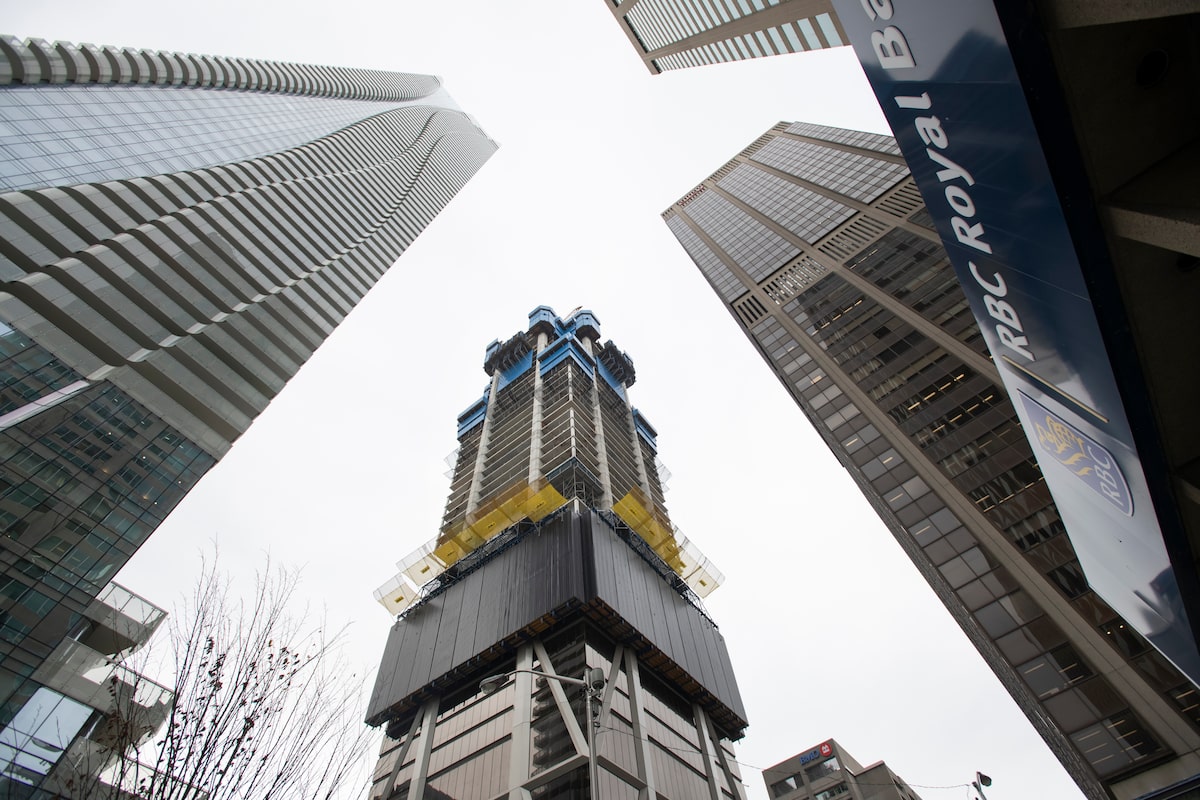The federal Liberals and Conservatives want to “solve” the housing crisis by making it easier for builders to build new units.
Sadly, with interest rates and construction prices at current levels, it seems unlikely that private companies will be able to provide the 3.5 million houses we need to restore affordability.
We need all levels of government to start building housing, not just wait for white knights from the private sector to ride in and save our middle class dreams.
Residential property developers are facing rising insolvencies as they struggle with higher borrowing and construction costs – and industry experts warn the trend is likely to worsen as interest expenses remain elevated.
…
At this pace, Canada is on track to reach about 240 real estate insolvencies this year, which would be 57-per-cent higher than 2023 and 13-per-cent higher than 2009, when a wide swath of businesses ran into problems owing to the financial crisis and global recession.
…
And that does not include the number of developers and projects that have been forced into receivership for not paying bills. The Office of the Superintendent of Bankruptcy does not include receiverships with its publicly available bankruptcy statistics. However, insolvency experts say they are seeing more projects go into receivership.
So far this year, the real estate sector accounts for 55 per cent of the receiverships recorded by Insolvency Insider Canada, a website that tracks the largest insolvencies in the country. That compares to 30 per cent last year and 33 per cent in 2022.
…
Today, the cost of residential construction is 81-per-cent higher across Canada’s major cities compared to 2017 and more than double – up 107 per cent – in the Toronto region, according to Statscan data.



Scarcity and competition for a scarce resource increase the value of that resource.
If we needed apples to live, and you had 1000 people wanting to buy your apples, and only had 10 of them, you can basically set the price to the highest amount 10 of those 1000 people are willing to pay. If you suddenly have 1000 apples, their value is eventually going to go down to the lowest price one of those 1000 want to pay.
The problem is we have apple hoarders with deep pockets who are willing to pay just as much for those 1000 apples as those 10, because if they don’t prop up the price, then the value of the other 100,000 apples they’ve hoarded will all fall as well. In order to seriously affect the price, we need to produce so many apples that buying them at current prices would bankrupt the apple hoarders
You’re right, I had not considered the impact of the gorram apple hoarders. As an individual, I tend to look at things from an individual perspective.
Thanks… There’s a lot of reasons why this analogy isn’t going to last now because supply and demand is grade school economics. Check out all of the ways government is subsidizing construction of units. And how does it work when a company is selling units, but they have to have an increase in revenue quarter over quarter? They can’t suddenly sell for less. Otherwise stock price will fall and executive’s will have to take parachutes. Government doesn’t want all these companies to fail, so they prop up the prices. This thing is far too complicated for supply and demand economics. Anyone selling that has invested in real estate
Why are they subsidizing housing? To prop up prices? Supply shortage? Probably both.
If you mean “Less than it cost to build”, then yes, that’s true. They could certainly lower their margins, if they needed to, but there is no incentive for them to do so.
I don’t think housing prices,in general, are tightly coupled to building costs. The price tends to exceed the cost because a large part of a house’s value is subjective (location, proximity to desirables, price of other homes in the area etc.).
How do they prop up prices? A quick google search indicates that one way the govt. props up prices is by buying mortgage backed securities. They do this to stimulate demand:
(https://betterdwelling.com/canada-is-spending-75-of-its-forecast-deficit-to-prop-up-mortgages/)
Ultimately, a house is worth the most that an individual is willing to pay for it, and I can’t really see how that is not a function of supply and demand.
If people did not have to compete for housing from the same, limited pool of houses, wouldn’t the price of houses necessarily drop in response?
I agree it is more complicated than “just” supply and demand, but I think it is safe to say that supply and demand play a not insignificant role.
They prop up prices in a lot of ways, the first one that comes to mind is extending the length of a mortgage. That makes housing both more affordable, but also makes the banks a lot more money.